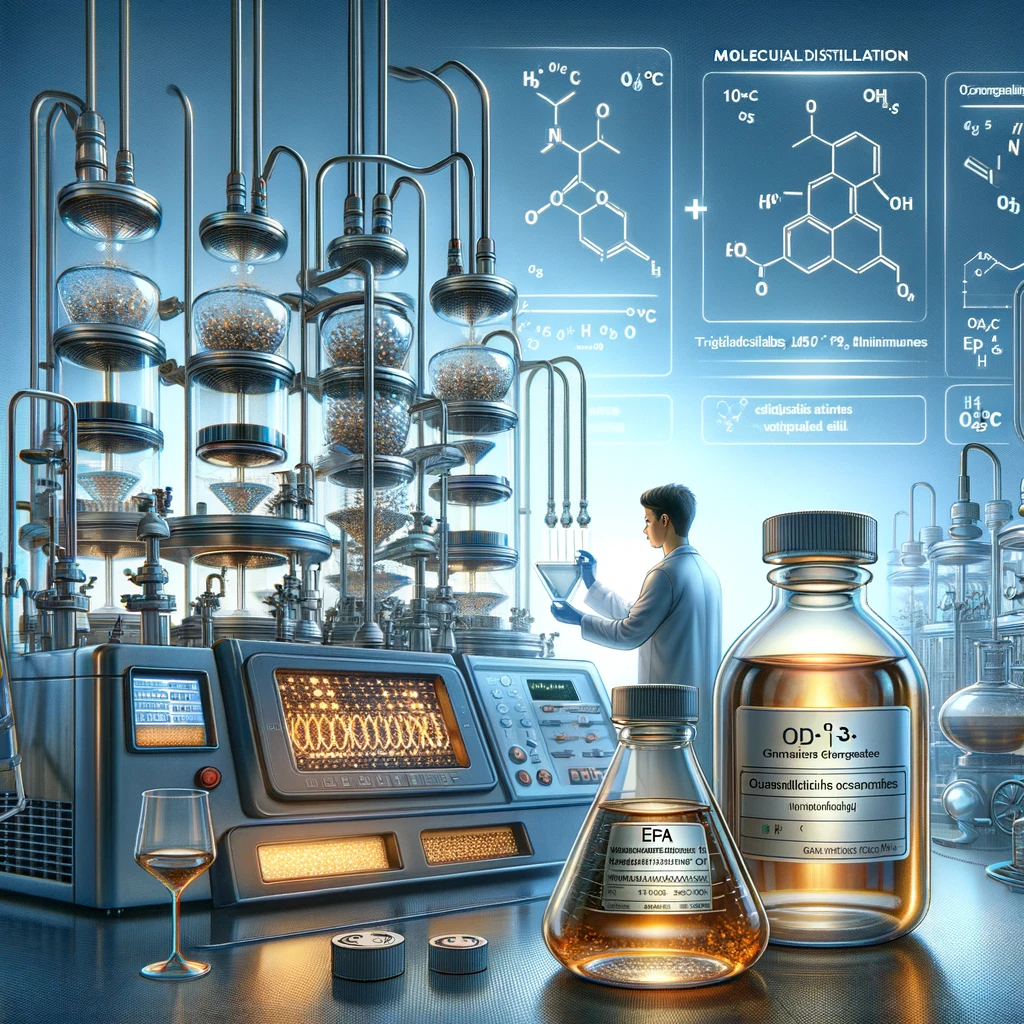
Molecular distillation is a pinnacle of achievement in the purification and concentration of cod liver oil, marrying the age-old virtues of this traditional supplement with the precision of modern science. This process, renowned for its ability to selectively enhance the oil’s omega-3 fatty acid content, also necessitates careful management to mitigate potential nutritional compromises and thermal risks. Here, we delve deeper into the nuances of molecular distillation, including the challenges of high temperatures, the use of ethyl esters, and the impact on lesser-focused nutrients.
High Temperature Challenges
A critical concern in molecular distillation is the potential damage to omega-3 fatty acids caused by high temperatures. Although the vacuum conditions lower the boiling points of substances, the temperatures required for distillation (150°C to 200°C) can still pose a risk of thermal degradation to these sensitive compounds. The integrity of omega-3 fats, particularly EPA and DHA, is paramount for their anti-inflammatory and cardiovascular benefits. Therefore, balancing the distillation conditions to minimize thermal exposure while achieving effective concentration and purification is a delicate endeavor.
Use of Ethyl Esters
To circumvent the stability issues associated with high temperatures, cod liver oil is often processed into ethyl esters. This modification involves breaking down the natural triglyceride form of the fats into ethyl esters, which are more stable under the conditions used in molecular distillation. While this form allows for easier concentration and purification of omega-3s, it is less bioavailable than the natural triglycerides. Consequently, post-distillation, these ethyl esters are frequently re-esterified into triglycerides, enhancing their bioavailability but adding complexity to the process.
The Expense of Lesser-Focused Nutrients
While molecular distillation excels in purifying and concentrating omega-3 fatty acids, this focus can come at the expense of other nutrients. The process may reduce the levels of vitamins A and D, along with other lesser-focused but still beneficial compounds present in cod liver oil. Although synthetic vitamins are often added back to the oil to restore its nutritional profile, the fate of other micronutrients and bioactive compounds during distillation may not receive the same attention. This selective concentration highlights a trade-off between enhancing specific nutritional components and preserving the oil’s full spectrum of natural nutrients.
Nutritional Balancing Act
The addition of synthetic vitamins and the potential loss of lesser-known nutrients underscore a nutritional balancing act. Producers must carefully consider how to maintain or enhance the oil’s comprehensive health benefits while leveraging molecular distillation’s capabilities for purity and concentration. This challenge necessitates ongoing research and innovation to optimize the process, ensuring that cod liver oil continues to deliver its full range of health-promoting properties.
Conclusion
Molecular distillation represents a sophisticated approach to refining cod liver oil, offering unprecedented control over its purity and nutritional content. However, the process involves navigating the complexities of temperature sensitivity, the bioavailability of omega-3 forms, and the preservation of the oil’s complete nutritional spectrum. By addressing these challenges, the continued evolution of molecular distillation techniques promises to enhance the efficacy and appeal of cod liver oil as a dietary supplement, ensuring its relevance and value for future